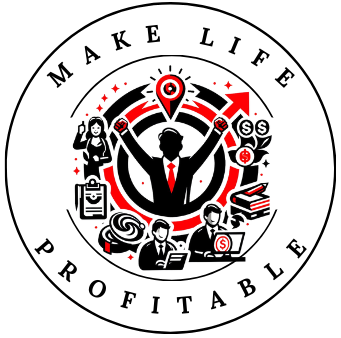Getting Started with Blog and Website Monetization

Today, let’s look at the world of blog and website monetization. This is about creating a platform that provides value and connects with an audience while generating income. We’ll uncover the key factors that can turn your digital space into a successful business venture.
Understanding E-E-A-T
Before digging into the details of monetization, let’s touch on E-E-A-T. It stands for Experience, Expertise, Authoritativeness, and Trust. These principles should guide every piece of content you publish. E-E-A-T separates thriving blogs from those lost in the digital abyss.
Don’t stress about mastering everything from day one. You can always adjust your approach as you go. The key is to lay a solid foundation to make your monetization efforts both effective and sustainable. So, let’s move on to finding that sweet spot for your platform – identifying your niche.
And yes, we have gone through these steps before, but you may have missed these and because your niche is the foundation of everything you will do going forward, it is worth talking about again.
Identifying Your Niche: The Foundation of Your Blog
Choosing a niche isn’t just about picking a topic; it’s about carving out your corner of the digital world where you can shine as an expert. Your niche will give your blog direction, purpose, and an audience interested in what you have to say. But how do you pick one?
Start with market research. Focus on areas you are passionate about because your enthusiasm will drive the blog. Balance your passion with profitability. Use tools like Google Trends to gauge interest in certain topics or look into forums and social media groups where potential audiences gather.
Look at success stories. Consider ‘Nomadic Matt,’ who turned his passion for travel into a popular travel blog, or ‘Smart Passive Income,’ where Pat Flynn shares online business strategies. What these successful blogs have in common is a strong grasp of their chosen niche.
There are hundreds of thousands of successful website niches. Be willing to spend some time thinking about and researching this area. You are going to be writing about this topic for a long time.
Once you have a niche in mind, validate it by seeking out existing content and identifying gaps you can fill. Your unique perspective will set you apart. Think about what you can offer that no one else does – that’s going to be your secret sauce. If you find an unmet need within a hobby, industry, or lifestyle, and you can write about it with authority and passion, you’re onto something.
Remember, your niche is not static. As trends evolve and your blog grows, you might find more specific sub-niches to explore. Flexibility and understanding when to pivot are crucial parts of your blogging journey. Finding your niche is the first step, and creating content that resonates within that niche is next – a decisive move that can propel your blog forward.
Content Creation: Offering Value to Your Audience
You’ve pinpointed your niche, and now it’s time to roll up your sleeves and start creating content. I’ll guide you through developing content that engages your audience and adheres to E-E-A-T principles.
Draft a content strategy that packs a punch. Focus on creating articles that provide real solutions and insights to your readers. This means doing thorough research, incorporating personal expertise, and maybe even interviewing experts if your topic demands it.
Don’t be afraid to try using AI tools like ChatGPT for ideas. I created a posting schedule along with content calendar for each month. Don’t be afraid to us AI for ideas. It is not cheating. You are getting ideas not creating all of your content with AI. To me, that is cheating. Honestly, there have been times when I was tired that I let AI do all the work but that should be few and far between. AI is good, but it cannot replace the human touch. It cannot replace personal experience. But don’t be afraid to ask it for content ideas. It does a great job and you can dig down as deep as you want to.
Your content must be original, informative, and entertaining. Infuse your personality into your posts. Let your unique voice shine through because that will set you apart from the sea of content out there.
Stay up-to-date with the latest trends in your niche. Providing timely and relevant content can position you as a go-to resource in your field. And if you have credentials, don’t shy away from highlighting them – it boosts your website’s authority.
As you shape your content, weave in monetization elements without compromising the user experience. If you’re into affiliate marketing, recommend products you genuinely believe in and that align with your content.
SEO and User Experience: Optimizing for Success

Now, let’s cover SEO (Search Engine Optimization) and user experience, crucial for the success of your monetized blog. This isn’t just about attracting more visitors; it’s also about keeping them engaged once they land on your site.
As I have mentioned numerous times, SEO continues to be a struggle for me, but I am getting better at it and understanding how to use it to gain traffic to my sites. I have also found that I am increasing my visitors to my site through social media. We will talk more about social media in a future post.
SEO is not merely about keywords and backlinks. Those are essential, but it’s also about providing a seamless, enjoyable experience for your audience. Think about how quickly your pages load, how easy it is for visitors to navigate your site, and the overall design aesthetic.
A site with an intuitive layout, clear calls-to-action, and mobile responsiveness isn’t just nice to have, it’s essential. Google’s algorithms prioritize user experience, especially with updates focused on mobile-first indexing and page experience signals.
To nail SEO while keeping user experience front and center, ensure your site is easy to navigate with a straightforward menu structure. Improve your page speeds by optimizing images and trimming unnecessary bloat from your site’s code. Stick with consistent, quality content, and the rest will follow.
Refine your site’s SEO and user experience based on analytics and user feedback. Tools like Google Analytics can provide insights into visitor behavior, while services like Google Search Console show how well your site is performing in search.
Monetization Strategies: Diversifying Your Revenue Streams
To turn your blog into a sustainable income source, roll out monetization strategies that resonate with your audience and align with your blog’s spirit. Here are some methods to consider and how to integrate them seamlessly.
First up, advertisements are straightforward. Platforms like Google AdSense can tailor ads to your audience, but don’t overload your site – user experience should never take a back seat to ads. Previously, I had used AdSense and while I made a few dollars using it, I had many comments that there were too many ads on my site! Yikes! We don’t need to chase people away by having too many ads.
Affiliate marketing is another popular avenue. Promote products or services and earn a commission for every sale made through your referral. Always disclose affiliate links, as transparency builds trust with your audience.
Selling digital products such as eBooks, courses, or exclusive content can be highly lucrative. This works best if what you’re selling is closely related to your niche and not easily found elsewhere for free.
Consider memberships or subscriptions. They can provide a steady income while deepening the relationship with your most dedicated followers.
Crowdfunding and donations via platforms like Patreon allow your readers to support you directly. The key here is to establish a genuine connection with your audience; they are more likely to support you if they feel engaged and valued.
These strategies are not mutually exclusive. The most successful blogs often combine several revenue streams for maximum financial resilience. Diversification isn’t just a buzzword – it’s a practical approach to weathering the ups and downs of the internet economy.
Building a Strong Community

A vibrant community not only improves monetization through direct support but also amplifies the reach and impact of your content.
Creating a successful monetized blog is a marathon, not a sprint. Stick to a consistent content schedule while remaining flexible enough to adapt to new trends, algorithm changes, and the evolving needs of your audience.
Don’t stress about making every decision perfectly. What’s more important is your ability to stay the course and learn from your experiences. Your blog will grow and evolve, and so will your monetization strategies.
Adhere to E-E-A-T principles; they’re the foundation of your credibility and trustworthiness online. Continuously hone your expertise, establish yourself as an authoritative source, and build trust with an honest, transparent approach to content.
Keep an eye on monetization trends and SEO updates. Staying informed will give you the upper hand in making smart, strategic decisions for your platform. Favor strategies that resonate with your brand and your audience, rather than chasing short-lived fads.
The most successful monetized blogs provide real value and foster an authentic connection with their audience. Focus on creating meaningful experiences for your readers, and the financial rewards are more likely to follow.
I hope you find these insights helpful as you build and grow your monetized blog or website. If you’re ready to dive in and start building your business hub for free, join Wealthy Affiliate today . Good luck!
P.S. If you are new to my blog, you may not know it but Wealthy Affiliate is the platform I use to train, host and create my websites including this one!

